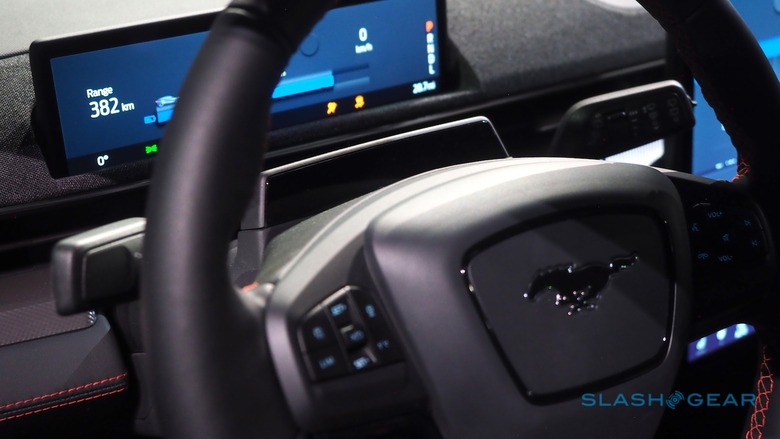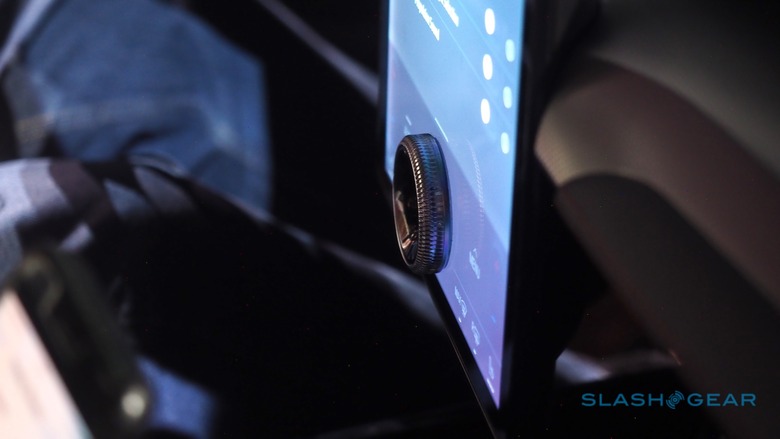Ford Is Building The Mustang Mach-E A Hands-Free Driving System
Ford is developing a hands-free driving system for the Mustang Mach-E, which will allow the all-electric car to pilot itself on certain roads without the driver needing to touch the wheel. The as-yet-unnamed feature isn't expected to launch at the same time as the first 2021 Mustang Mach-E models arrive in dealerships, but Ford says that doesn't mean early-adopters will miss out.
It's part of Ford's push to make sure that the new addition to the Mustang family is as tech-savvy as EV drivers have come to expect. With Tesla popularizing its Autopilot system, the ability for a car to take on some share of the highway driving is increasingly expected for new electrified vehicles.
However truly hands-free systems are still a comparative rarity. Autopilot, like most driver assistance systems, still expects the driver's hands to be resting on the wheel. While you can move your hands away for a limited period of time – typically based on the speed of the road, among other factors – eventually the car will demand you return them.

In a welcome move, every trim of the 2021 Mustang Mach-E will launch with blind spot monitoring, adaptive cruise control, and lane-keeping assistance as standard. They're features that remain options on a number of more expensive cars; the Jaguar I-PACE, for example, doesn't come with blind spot warnings as standard. However Ford has something more interesting in the pipeline.
It's an attention-based system, which will eventually allow the Mustang Mach-E driver to take their hands on the wheel and rely on the EV to keep pace with traffic and stay centered in the lane. It uses a camera system built on top of the steering column, just below the speed display, which tracks where the driver is looking. As long as you're paying sufficient attention to the road ahead, the Mach-E won't insist on you actually holding the wheel.
Ford's approach sounds similar to that of GM's, which has been offering Super Cruise on select Cadillac models for a couple of years now. Like Super Cruise, the Mustang Mach-E's system will be highway-only, at least initially. It requires high-precision mapping of the roads first, which the car then uses – along with a more precise GPS sensor – to make sure it's in the right place within the lane.
Roam outside of the mapped area, and the system will turn off. You'll be able to use regular adaptive cruise control, but not hands-free. Ford says that geofencing will expand over time, because of the fact that the Mustang Mach-E has OTA update support.

Indeed it's that connectivity which will be used to turn on the system when it's finally available. Ford will be installing the necessary hardware from day one – though it won't be standard on all trims – then deploying the software to enable that hardware later.
"So all of the hardware for that technology will be in the car at the launch," Dave Pericak, Director of Icons at Ford, confirms. "But we will then do is over the air update. We will enable that feature a little bit later as we finish our development of it."
Ford is being upfront about the fact that this isn't autonomous driving. "It's not quite Level 3," Pericak says, "it's a little more than Level 2 with the standard definition of Level 2, but it's not a Level 3."
Initially, the Mustang Mach-E's hands-free system won't be able to do automatic lane changes. The driver will be responsible for changing lane themselves, at which point the system will re-engage. However, that's something Ford is working on, and the OTA system means that future updates would be able to add that feature in at a later point.

The number of sensors Ford is building into the Mustang Mach-E is shaping up to be considerable. Right now it's not confirming just how many there'll be, but it did tell SlashGear that there'd be cameras, LIDAR, ultrasonic, and radar in the mix. The result is 360-degree awareness around the vehicle, though without knowing just what sensors have visibility in each place, we don't know what sort of range that full coverage will encompass.
All the same, it's a welcome move for Ford, which has faced criticism that its driver-assistance technology has lagged behind that of some of the automaker's rivals. It's unclear when, exactly, this hands-free driver assistance will be added to the Mustang Mach-E, but the fact that cars will be equipped with the necessary hardware at least from the outset is promising. Deliveries of the 2021 Mustang Mach-E will begin from late 2020, initially with the Premium and Launch Edition trims, with other versions – including the most powerful GT – arriving in the following nine months or so.
